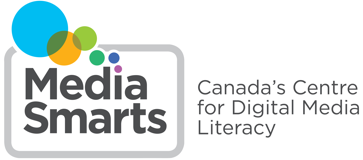Outcome Chart - Manitoba - English Language Arts 11
Listen, speak, read, write, view, and represent to explore thoughts, ideas, feelings, and experiences
Discover and Explore
- Explain the value of pursuing personal preferences for a variety of texts and genres by particular writers, artists, storytellers, and filmmakers
Lessons
- Challenging Hate Online
- Free Speech and the Internet
- Marketing to Teens: Gotta Have It! Designer & Brand Names
- Online Propaganda and the Proliferation of Hate
- Popular Music and Music Videos
- Popular Music and Music Videos
- The Blockbuster Movie
- Suffragettes and Iron Ladies
Listen, speak, read, write, view, and represent to comprehend and respond personally and critically to oral, print, and other media texts
Use Strategies and Cues
- Use textual cues, prominent organizational patterns within texts, and stylistic techniques [such as irony, parody, satire] to confirm meaning and interpret texts
Respond to Texts
- Experience texts from a variety of genres [such as comedy, tragedy, contemporary and classical drama] and cultural traditions; consider alternative interpretations
- Compare the themes and values portrayed in a variety of Canadian and international oral, literary, and media texts and relate observations to personal experiences
- Analyze how word choice and visual images in oral, literary, and media texts convey and evoke emotion and accomplish a variety of purposes
Understand Forms and Techniques
- Recognize unique characteristics of a variety of genres in oral, literary, and media texts, and demonstrate appreciation of how choice of genre and form affect audience response
- Analyse how plot, character, setting, and mood enhance meaning, and evaluate the effectiveness of techniques used in oral, literary, and media texts
- Evaluate ways in which creative uses of language [such as choice of words, use of idiom and dialect, use of punctuation] develop a personal style; evaluate the effectiveness of media techniques and devices [such as fades, close-ups, flashbacks]
Create Original Text [such as biographies, audio or video documentaries, critiques, films, photo-essays] to
- communicate and demonstrate understanding of forms and meanings
Lessons
- Advertising and Male Violence
- Bias in the News
- Camera Shots
- Challenging Hate Online
- Crime in the News
- Don’t Drink and Drive: Assessing the Effectiveness of Anti-Drinking Campaigns
- Free Speech and the Internet
- Hoax? Scholarly Research? Personal Opinion? You Decide!
- Images of Learning: Secondary
- Kellogg Special K Ads
- Marketing to Teens: Alternate Ads
- Marketing to Teens: Gender Roles in Advertising
- Marketing to Teens: Gotta Have It! Designer & Brand Names
- Marketing to Teens: Marketing Tactics
- Marketing to Teens: Talking Back
- Online Propaganda and the Proliferation of Hate
- Perceptions of Youth and Crime
- Political Cartoons
- Popular Music and Music Videos
- Sex in Advertising
- Suffragettes and Iron Ladies
- Television Broadcast Ratings
- The Blockbuster Movie
- The Front Page
- The Pornography Debate: Controversy in Advertising
- The Price of Happiness: On Advertising, Image, and Self Esteem
Listen, speak, read, write, view, and represent to manage ideas and information
Plan and Focus
- Prepare, use, and revise an inquiry or research plan; locate, access, and record relevant information from a variety of sources [such as newspapers, books, Internet, newscasts, video]
Select and Process
- Identify a range of diverse and specialized information sources [such as magazines, documentaries, hobby or sports materials, multimedia resources] to satisfy inquiry or research needs
- Evaluate the reliability and credibility of a variety of information sources and perspectives for a particular inquiry or research plan
- Identify and analyze a variety of factors [such as distinctions between fact, emotion, and opinion; distinctions between content and its presentation - colour, angle, movement, framing, and sequencing; the speaker’s or author’s purpose and intention] that affect meaning; use effective listening, reading and viewing techniques
Lessons
- Bias in the News
- Deconstructing Web Pages
- Don’t Drink and Drive: Assessing the Effectiveness of Anti-Drinking Campaigns
- Hoax? Scholarly Research? Personal Opinion? You Decide!
- Perceptions of Youth and Crime
- Selling Tobacco
- The Privacy Dilemma
Tip Sheet
Listen, speak, read, write, view and represent to enhance the clarity and artistry of communication
Generate and Focus
- Know, use, and adapt a variety of forms [such as essays, debates, commercials] to match content, audience and purpose
- Use organizational structures and techniques encountered in listening; reading, and viewing experiences to enhance own oral, written, and visual texts
Lessons
- Challenging Hate Online
- Free Speech and the Internet
- Images of Learning: Secondary
- Marketing to Teens: Gotta Have It! Designer & Brand Names
- Marketing to Teens: Marketing Tactics
- Marketing to Teens: Talking Back
- Online Propaganda and the Proliferation of Hate
- Television Broadcast Ratings
- Video Production of a Newscast
Listen, speak, read, write, view and represent to celebrate and build community
Develop and Celebrate Community
- Recognize and discuss the impact to historical setting, culture, and literary tradition on a variety of oral, literary, and media texts
- Analyze how language and oral, literary, and media texts define personal roles and experiences in communities
Lessons
- Advertising and Male Violence
- Bias in the News
- Challenging Hate Online
- Don’t Drink and Drive: Assessing the Effectiveness of Anti-Drinking Campaigns
- Free Speech and the Internet
- Images of Learning: Secondary
- Online Propaganda and the Proliferation of Hate
- Perceptions of Youth and Crime
- Sex in Advertising
- The Pornography Debate: Controversy in Advertising
- The Price of Happiness: On Advertising, Image, and Self Esteem
- Violence on Television
